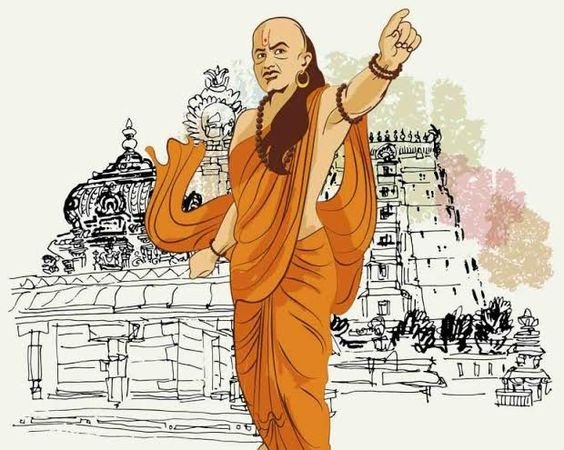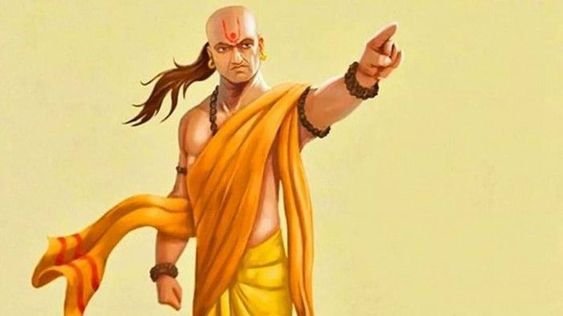Strategic Governance: Unveiling Chanakya’s Arthashastra

Strategic Governance: Unveiling Chanakya’s Arthashastra
Chanakya, also known as Kauṭilya or Vishnugupta, was an eminent figure in ancient Indian history, flourishing between 375 and 283 BCE. Renowned as a polymath, he excelled as a teacher, author, strategist, philosopher, economist, jurist, and royal advisor. His most enduring contribution lies in authoring the Arthashastra, a seminal text in the realm of political science and economics, believed to be composed between the fourth century BCE and the third century CE. This work positions him as a pioneering figure in the development of political thought and economic principles in India, with his ideas considered a significant precursor to classical economics.

Chanakya’s invaluable insights were lost to history towards the end of the Gupta Empire in the sixth century CE, only to be rediscovered in the early 20th century. Around 321 BCE, he played a pivotal role in shaping the destiny of the Indian subcontinent by assisting Chandragupta, the first Mauryan emperor, in his ascension to power. Chanakya’s strategic brilliance and counsel were crucial in the establishment of the Maurya Empire, where he served as the chief advisor not only to Chandragupta but also to his son Bindusara. His enduring influence on political thought and governance continues to be acknowledged, making Chanakya a revered figure in the history of ancient India.
Chanakya’s Varied Origins in Folk Narratives
The historical details surrounding Chanakya remain elusive, with much of the information derived from semi-legendary accounts. Renowned American historian Thomas Trautmann has identified four distinct versions of the ancient Chanakya-Chandragupta legend, each providing unique perspectives on the events. These accounts have been preserved in various ancient texts.

The Buddhist Version: The legend of Chanakya and Chandragupta is chronicled in the Pali-language Buddhist chronicles of Sri Lanka, notably the Mahavamsa, dating between the fifth and sixth centuries CE. The Dipavamsa, the oldest of these chronicles, does not reference this narrative. The Vamsatthappakasini, a commentary on Mahavamsa from the sixth to 13th centuries CE, further elaborates on the legend. Other texts like Maha-Bodhi-Vamsa and Atthakatha provide additional details, including the names of nine preceding Nanda kings. While historical accuracy may be debated, these narratives remain integral to understanding the cultural and political dynamics of ancient India, emphasizing Chanakya’s strategic prowess and Chandragupta’s rise to power. The enduring presence of this legend underscores its significance in shaping the historical narrative of the region.

The Jain Version: The Chandragupta-Chanakya legend features prominently in several commentaries of the Shvetambara canon, with the Jain rendition primarily documented in the Sthaviravali-Charita or Parishishta-Parvan, penned by the 12th-century author Hemachandra. Drawing from Prakrit kathanaka literature, composed between the late first century CE and mid-8th century CE, Hemachandra’s account is grounded in the commentaries on canonical texts like Uttaradhyayana and Avashyaka Niryukti. This Jain version is considered by historian Thomas Trautmann to be older and more consistent than its Buddhist counterpart. The enduring presence of this legend in Jain literature attests to its significance in shaping the cultural and historical narratives of ancient India.
The Kashmiri Version: The 11th-century Kashmiri Sanskrit collections of legends, Brihatkatha-Manjari by Kshemendra and Kathasaritsagara by Somadeva, share a common source in the now-lost Prakrit-language Brihatkatha-Sarit-Sagara. This original work was believed to be derived from the Paishachi-language Brihatkatha by Gunadhya, which is also lost to history. Within the Chanakya-Chandragupta legend present in these collections, an intriguing addition is the character named Shakatala. This character introduces a distinctive element to the narrative, enriching the legend with additional layers of complexity and intrigue. The inclusion of Shakatala underscores the creative adaptations and reinterpretations that occurred as these legends passed through various cultural and linguistic lenses, contributing to the rich tapestry of ancient Indian storytelling.

Vishakhadatta’s Version: This rendition is found in Mudrarakshasa, a Sanskrit play composed by Vishakhadatta. This dramatic version adds a creative and artistic dimension to the Chanakya-Chandragupta narrative. The chronology of its composition remains shrouded in uncertainty. As the Mudrarakshasa references the Huna invasions in northern India during the Gupta period, the play is deemed to belong to the post-Gupta era, with suggested dates ranging from the late fourth century to the eighth century. The Mudrarakshasa legend introduces unique narratives absent in other Chanakya-Chandragupta versions, prompting Trautmann to posit its predominantly fictional or legendary nature, lacking a solid historical basis.
Across all four versions, a common theme emerges: Chanakya, feeling insulted by the Nanda king, takes a solemn vow to bring about his downfall. In pursuit of this objective, Chanakya masterminds the removal of the Nanda ruler from power, subsequently installing Chandragupta as the new king. This central narrative thread, while subject to variations in each version, underscores Chanakya’s determination and strategic prowess in the face of perceived injustice, making him a key figure in the historical and legendary tapestry of ancient India.

Arthashastra: a Beacon for Modern Governance
The Arthashastra, a Sanskrit treatise on statecraft, political science, economics, and military strategy, is attributed to Kautilya, also known as Vishnugupta and Chanakya. The meaning of the title encompasses a multifaceted range of meanings, suggesting translations such as “political science,” “economic science,” or simply “statecraft.” The term “artha” in Sanskrit is polysemous, carrying diverse connotations. The work’s extensive scope is evident in its coverage of government, law, court systems, ethics, economics, markets, trade, ministerial selection methods, diplomacy, theories on war, the nature of peace, and the duties and obligations of a king. Rooted in Hindu philosophy, the Arthashastra delves into various aspects of ancient life, providing detailed insights into agriculture, mineralogy, mining, metals, animal husbandry, medicine, as well as aspects of forests and wildlife. This comprehensive approach reflects the text’s ambition to serve as a guide to governance, encompassing not only political and economic facets but also cultural and ecological dimensions of society.

The Arthashastra extends its exploration beyond political and economic realms to address social welfare and collective ethics crucial for societal cohesion. It advises kings to undertake public projects in times or regions affected by famine, epidemic, natural disasters, or war. Such projects include the construction of irrigation waterways and forts around strategic locations and towns. Furthermore, the text recommends the exemption of taxes for those adversely affected by such crises. This emphasis on public welfare aligns with the broader ethical considerations embedded in the Arthashastra.
In crafting its principles, the Arthashastra draws influence from Hindu texts, particularly sections related to kingship, governance, and legal procedures found in Manusmriti. By incorporating these insights, the Arthashastra seeks to provide a comprehensive guide for rulers, intertwining governance with ethical and humanitarian responsibilities and fostering a holistic approach to leadership.

Chronology of the Scholarly Evolution surrounding the treatise
Traditionally credited as the author, Chanakya served as the teacher and guardian of Mauryan emperor Chandragupta Maurya. Scholars debate whether Kautilya and Chanakya are the same person, with some questioning this identification. The text, likely authored by multiple individuals between the 2nd century BCE and 3rd century CE, was influential until its disappearance in the 12th century. Rediscovered in 1905 by R. Shamasastry, it gained global interest in the 21st century, especially among power-predictors analyzing the implications of a rising India.
Lost to scholars until 1905, the Arthashastra’s Sanskrit manuscript was discovered and translated by Shamasastry, with subsequent editions by scholars like Julius Jolly, Richard Schmidt, Muni Jina Vijay, and RP Kangle. Its dense, coded Sanskrit has posed challenges for translation, with some parts remaining unknown even after a century of scholarly efforts.
Structure and literary styles
The Arthashastra’s authorship and precise date remain uncertain, with surviving manuscripts likely completed in the form available between the 2nd century BCE and 3rd century CE. The text underwent a complex transmission involving at least three major overlapping divisions or layers, comprising 15 books, 150 chapters, and 180 topics. Each chapter, primarily prose, concludes with a transition into poetic verse, a distinctive feature in ancient Hindu Sanskrit texts signalling the end of a section.

A noteworthy structural element is the poetic transition and the colophon at each chapter’s end, presenting the book title, topics, and total titles. The division into 15, 150, and 180 holds significance, aligning with the traditional numerical preferences found in major Hindu texts. The Arthashastra encompasses diverse topics related to governance, politics, economics, intelligence gathering, and war strategy, maintaining a consistent numbering system throughout its 5,300 sentences, with the largest book containing 1,285 sentences and the smallest 56.
According to scholar Olivelle, the Arthashastra’s evolution occurred in three phases. The oldest layer, the “sources of the Kauṭilya,” is dated from 150 BCE to 50 CE. The subsequent “Kauṭilya Recension” emerged between 50 and 125 CE. The final stage, the “Śāstric Redaction”, or the text as known today, is dated from 175 to 300 CE.
Fragments of the Arthashastra have been discovered in ancient Buddhist monasteries in northwest China, Afghanistan, and northwest Pakistan, indicating its geographical spread. Notably, the text uses the term “gramakuta” to describe a village official, suggesting the author’s familiarity with the region encompassing present-day Gujarat and northern Maharashtra. Additional evidence supporting this theory includes references to specific geographical phenomena and rainfall figures in historical regions like Avanti and Ashmaka, which correspond to parts of present-day Gujarat and Maharashtra. The author also displays knowledge of sea-trade, possibly influenced by ancient ports like Sopara in the Gujarat-Maharashtra region, further affirming the text’s connection to this geographical area. Additionally, the continued existence of the gotra name Kauṭilya in Maharashtra lends support to the author’s regional background.

Conclusio
Chanakya’s work, the Arthashastra, continues to exert a profound influence in contemporary governance and academia, akin to the enduring impact of Machiavelli’s “The Prince” and Plato’s “Republic.” In the realm of political philosophy, the Arthashastra serves as a timeless guide, providing insights into statecraft, economics, and military strategy. Its principles resonate with modern leaders and policymakers, offering strategic wisdom applicable to governance challenges.
Scholars and practitioners frequently reference Chanakya’s ideas in academic discourse and strategic planning. The Arthashastra’s discussions on governance, ethics, and the art of statecraft remain relevant, prompting discussions on leadership, economic policies, and diplomatic strategies. In an era marked by geopolitical complexities, Chanakya’s timeless wisdom finds renewed relevance as nations navigate intricate political landscapes. Just as Machiavelli’s pragmatic approach and Plato’s philosophical insights endure in contemporary discussions, Chanakya’s Arthashastra stands as a foundational text, providing a valuable resource for understanding the intricacies of governance and leadership in the modern world.


